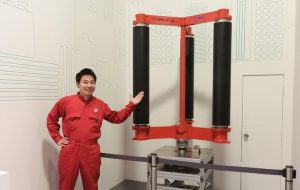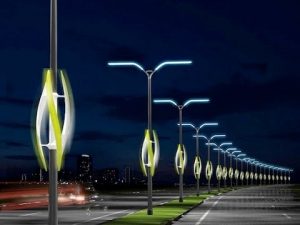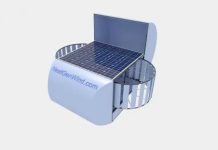Typhoons and tsunami are serious problems in Japan. The destructive power of typhoons brings a lot of troubles to the Japanese, but do not deny that hurricanes are a source of alternative energy. Only this year, the Japanese suffered 6-powerful typhoons.

Challenergy (Japanese known company) found a solution to curb of the destructive forces of nature. Specialists patented a wind-powered generator. Certainly vertical wind-powered generator is not unique. But vertical wind-powered generator, which can process the movement of air currents in the peaceful energy without damage to the equipment, is something new.

Astushi Shimizu, project manager, says that only one typhoon can produce kinetic energy equivalent to half of all electricity in the world. In addition, the project manager says that Japan has great potential for wind energy production. So his company built wind-powered generator operates Magnus effect – the transverse force that causes an object that rotates, to deviate from the straight path. This scheme provides control over all elements of the equipment.
Despite the fact that the effectiveness of traditional windmills on a quarter higher than the Japanese know-how, but it equipment is able to survive the typhoon. According to the analysis of Challenergy sufficient number of wind-powered generators can provide power for all of Japan for 50 years. And it is strong enough only one typhoon.
Such developments are important not only for the world, but most of Japan. This is due to the fact that for a long time country opposed to nuclear power. Thus, by 2010, all Atomic Power Station in Japan had to produce 60% of the total energy of the country. But the accident at the Fukushima-1 in March 2011 forced the government to review energy policy. This accident was not the last – another 3 less massive accidents.
Today Japan imports 84% of its electricity. This is also due to the destructive power of typhoons that destroy equipment. Therefore, the only green source is the sun. But in July 2016 in Okinawa prototype installation was set to be tested in real conditions typhoon. The company plans to install the installation at the National Stadium, which will be commissioned in 2020. That year the country will host the Olympic Games.



